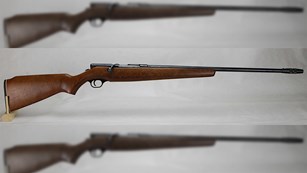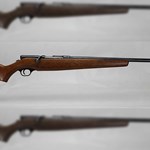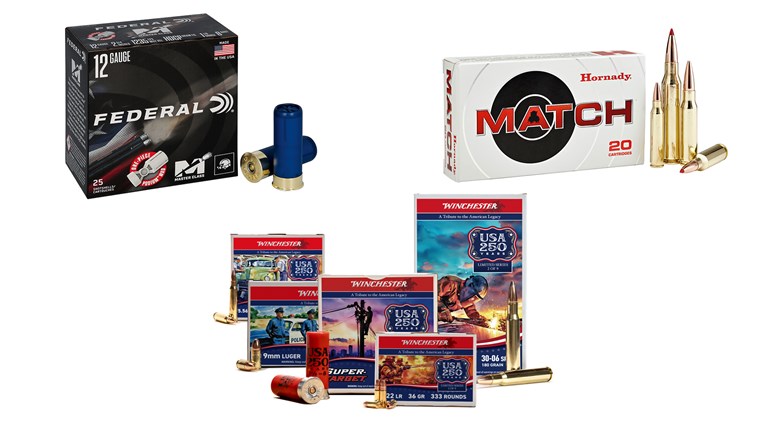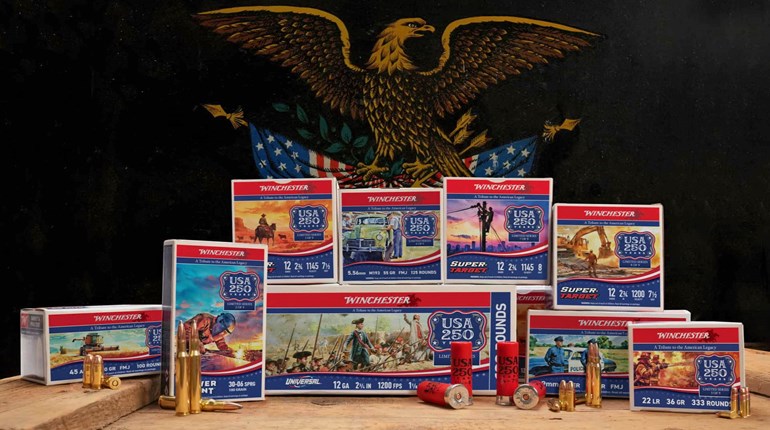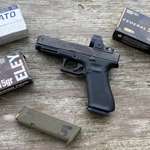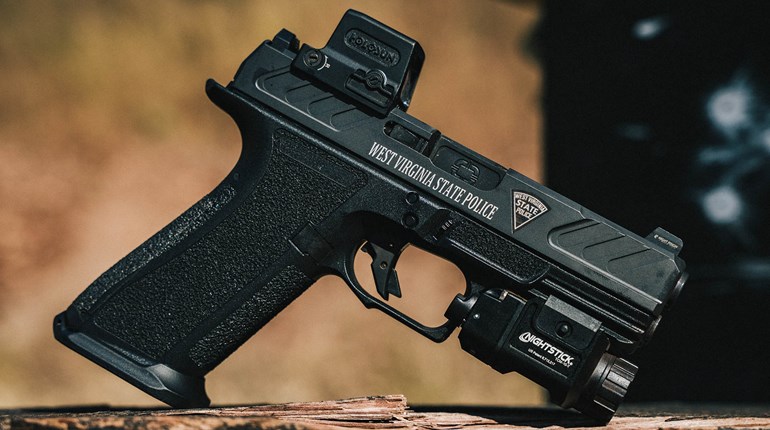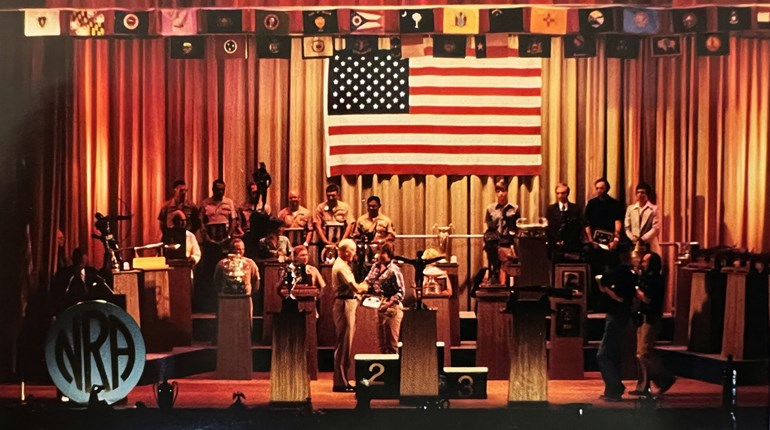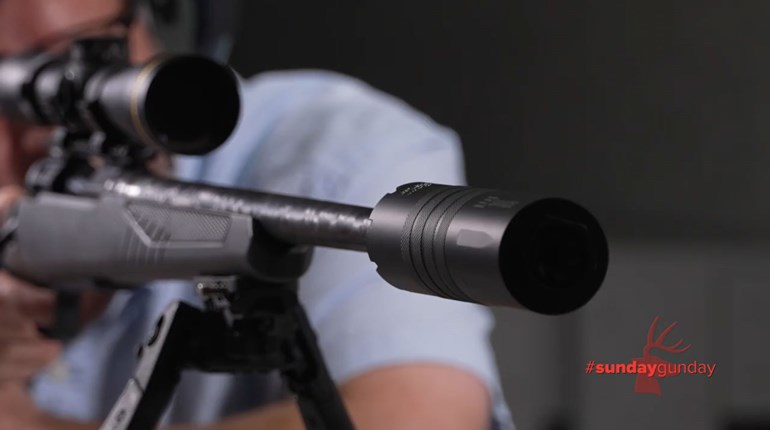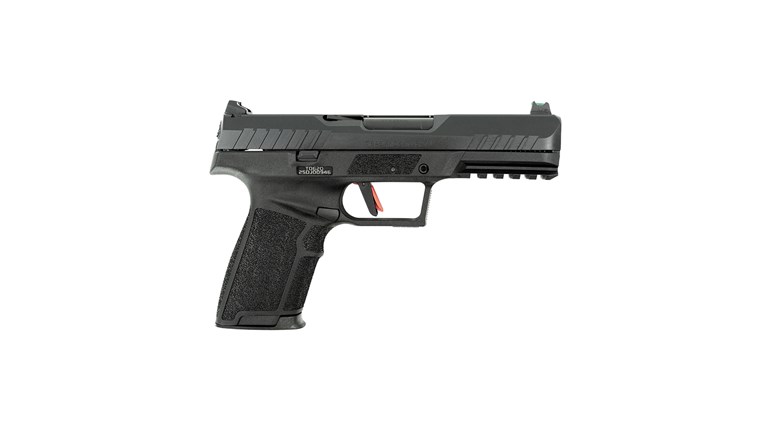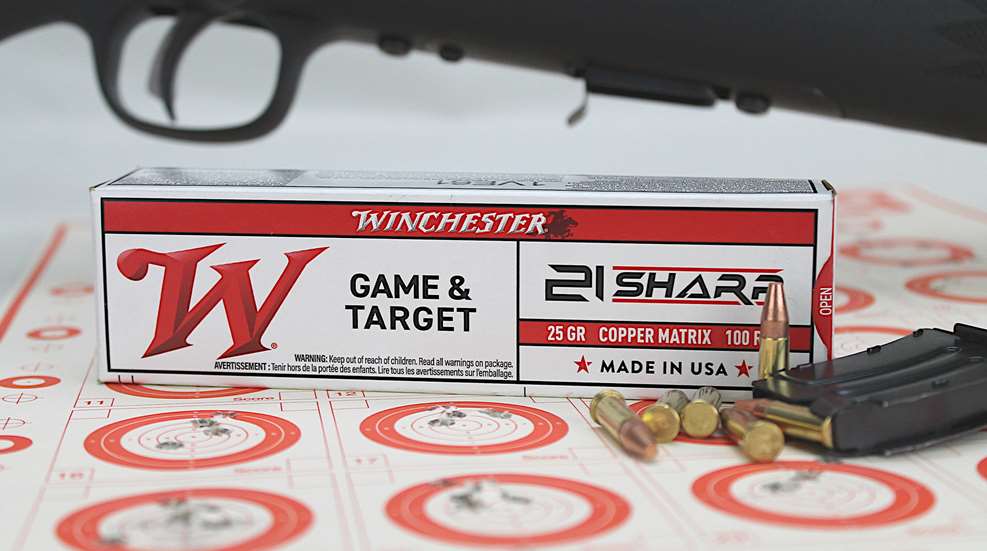
Winchester’s new rimfire .21 Sharp cartridge and rifles to chamber it are finally reaching dealers.
While comparisons to the .22 Long Rifle are natural, the .21 Sharp stands on its own with higher performance and four bullet options, including jacketed hollow point (JHP) and solid copper bullets for hunting, and perhaps a future potential for competition. Rifles and ammo are as affordable as .22 Long Rifle, so we have another option for plinking, as well.
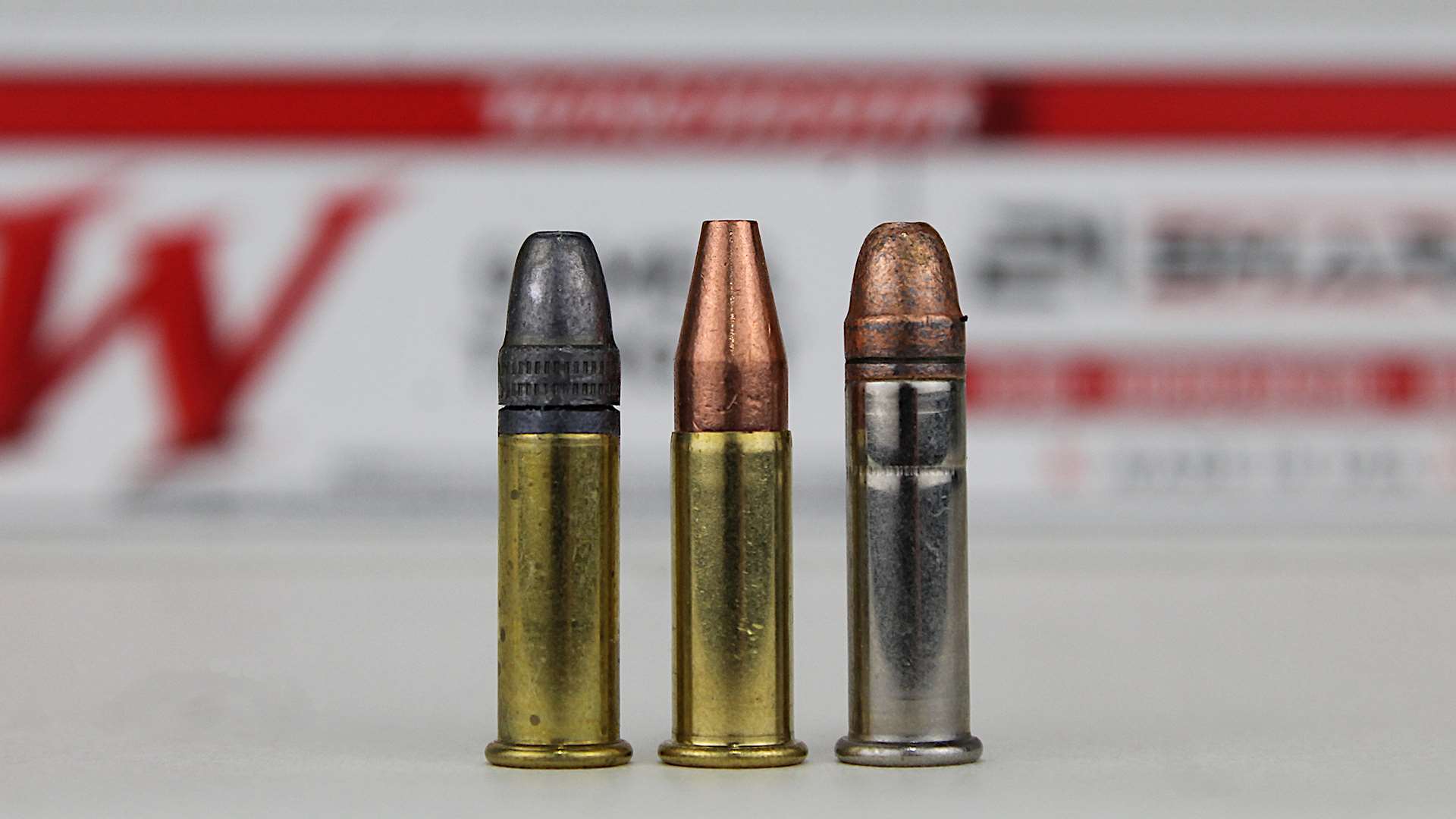
We covered the .21 Sharp cartridge in detail in a preliminary report. To summarize, the .21 Sharp uses the same case as the .22 Long Rifle cartridge, so many makes and models of .22 Long Rifle firearms can be made to shoot the .21 Sharp with only a barrel change. Two rifles available now falling into that category are the Savage Arms Mark II and Winchester’s Xpert, both previously released .22s fitted with .21 Sharp barrels.
What’s unique about the cartridge is that the .21 Sharp dispenses with the .22 Long Rifle bullet’s antiquated round nose and heel base bullet, launching instead a modern bullet configured in profile rather like a truncated cone with a small meplat. Bullet diameter is reduced from the .22 Long Rifle’s .2255 inch to .2105 inch, so bores of .21 Sharp firearms are likewise reduced.
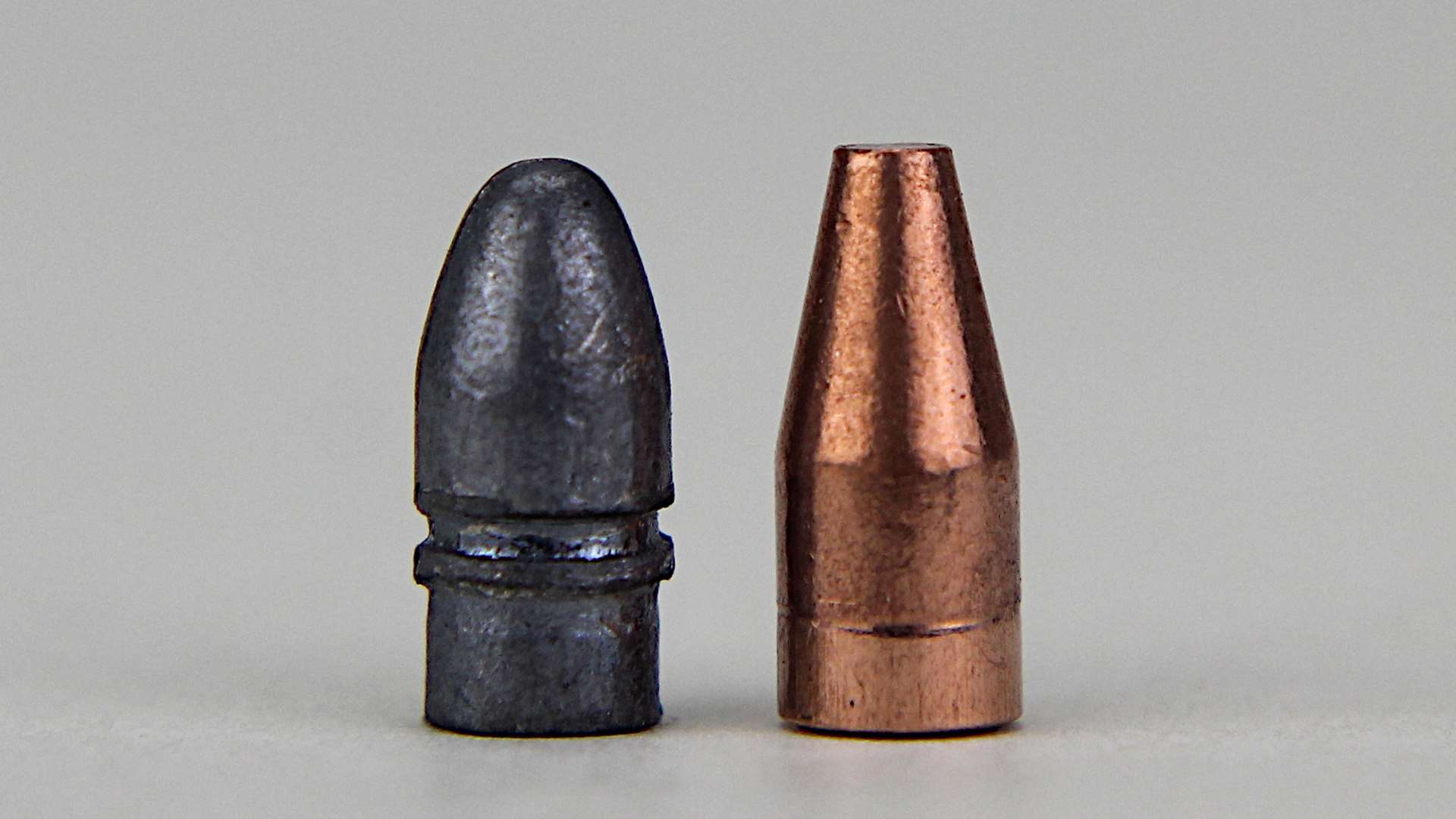
SAME, BUT DIFFERENT
I had reported previously that the SAAMI spec for the .21 Sharp chamber is the same as for the .22 Long Rifle, but that is correct only as regards the cartridge case and not the bullet. A .22 Long Rifle cartridge will enter a .21 Sharp chamber, but it cannot fully seat—the bolt cannot close when attempting to chamber a .22 Long rifle cartridge in the Savage Mark II FV-SR .21 Sharp rifle evaluated here. Comparing SAAMI drawings of the two chambers shows that, though the chamber dimensions are essentially identical insofar as accepting the cartridge case, the angle where the chambers transition to throat, plus the diameter and depth of the throats, differ such that the larger .22 Long Rifle bullet cannot enter the .21 Sharp throat, which halts the .22 Long Rifle cartridge from fully entering in the .21 Sharp chamber.
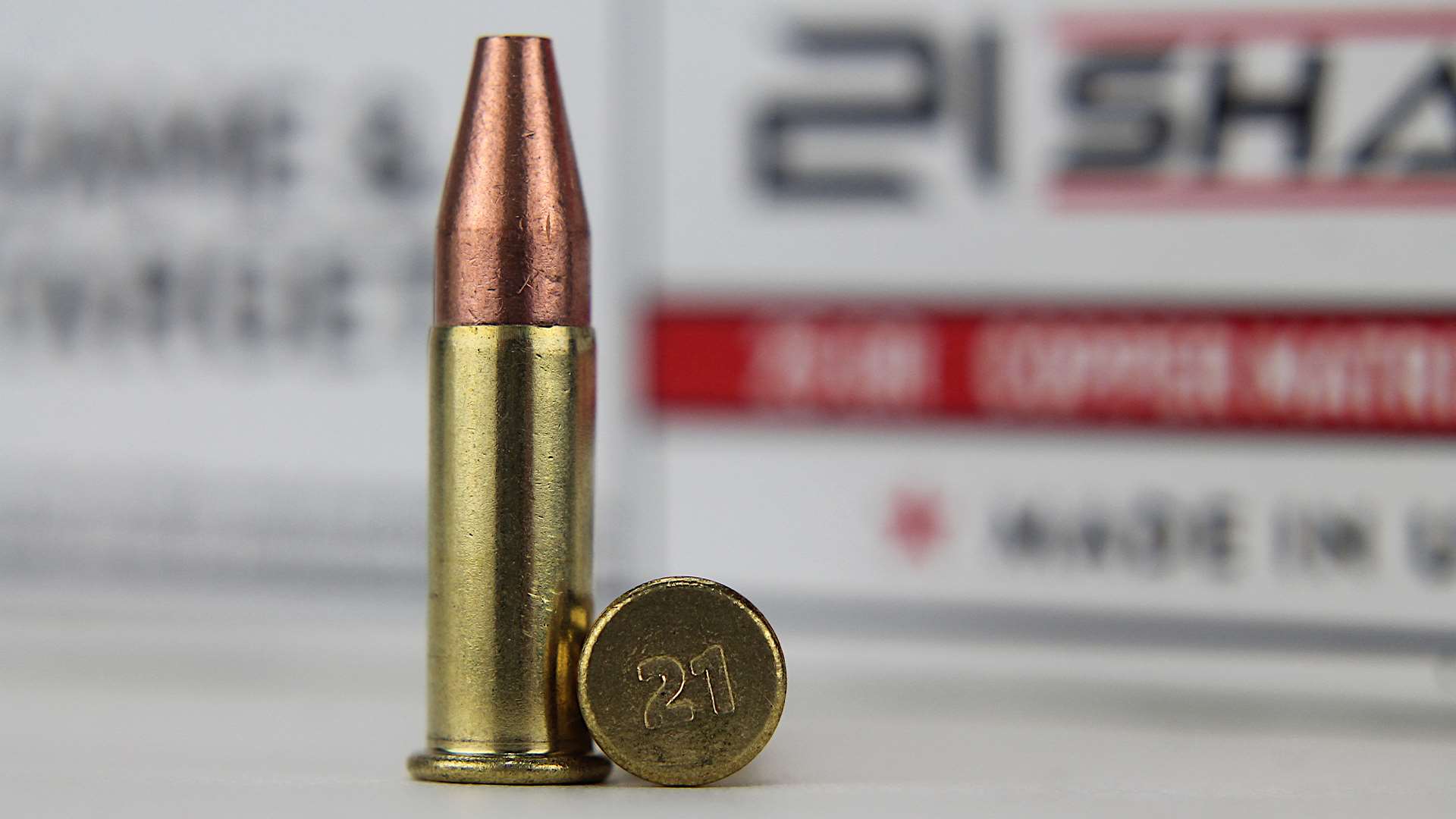
This is a good thing. The difference in bullet diameters creates a situation of incompatibility, as firing the oversize .22 Long Rifle bullet, essentially attempting to swage it down .0205 inch during its passage down the .21 Sharp’s bore would certainly raise chamber pressure, possibly to unsafe levels. Conversely, while the .21 Sharp cartridge will fit a .22 Long Rifle chamber, launching a .21 Sharp bullet from a .22 Long Rifle firearm would result in abysmal accuracy, as the bullet is undersize in the .22 Long Rifle’s bore and would likely fail to engage the rifling (see Table 1).
Table 1
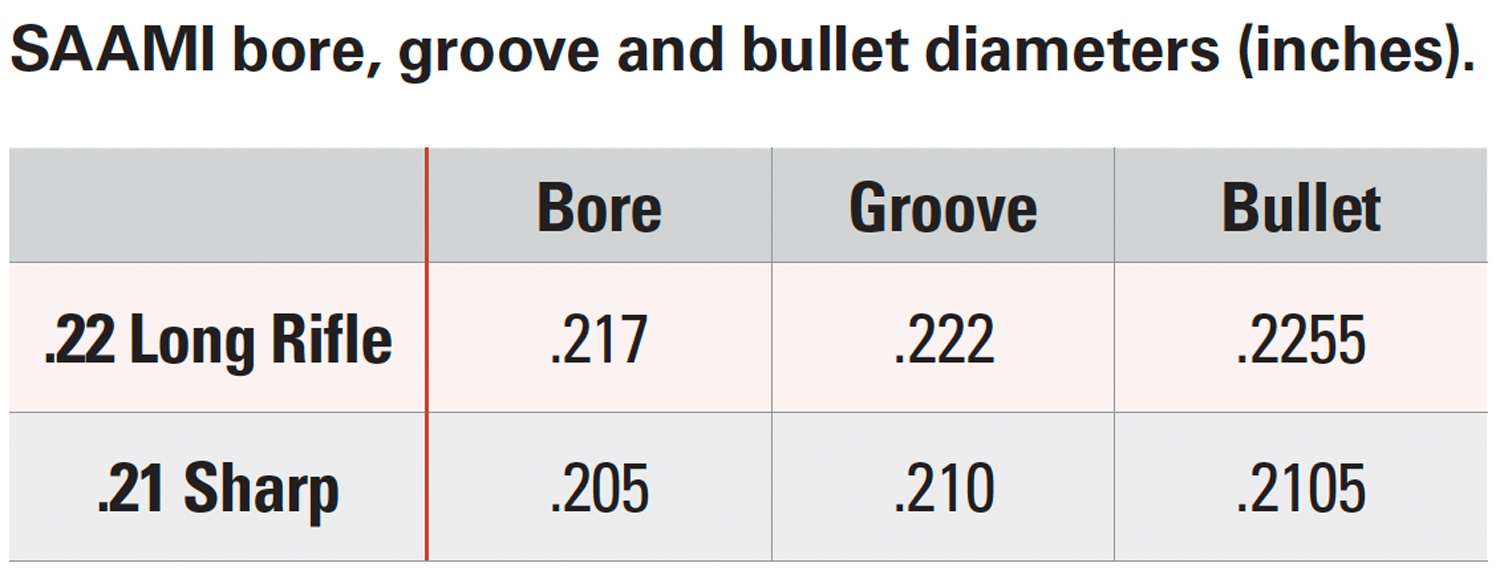
SLOW AVAILABILITY
Though announced in the latter part of 2024, .21 Sharp ammunition and rifles have not been readily available. Obtaining even a loaner rifle from manufacturers for evaluation was an exercise in patience. After seven months, I finally found online and purchased a new Savage Arms Mark II FV-SR from a national distributor, and Winchester generously provided its 25-grain Copper Matrix ammunition for evaluation. The retail price tag of the Savage rifle was remarkably affordable at less than $300.
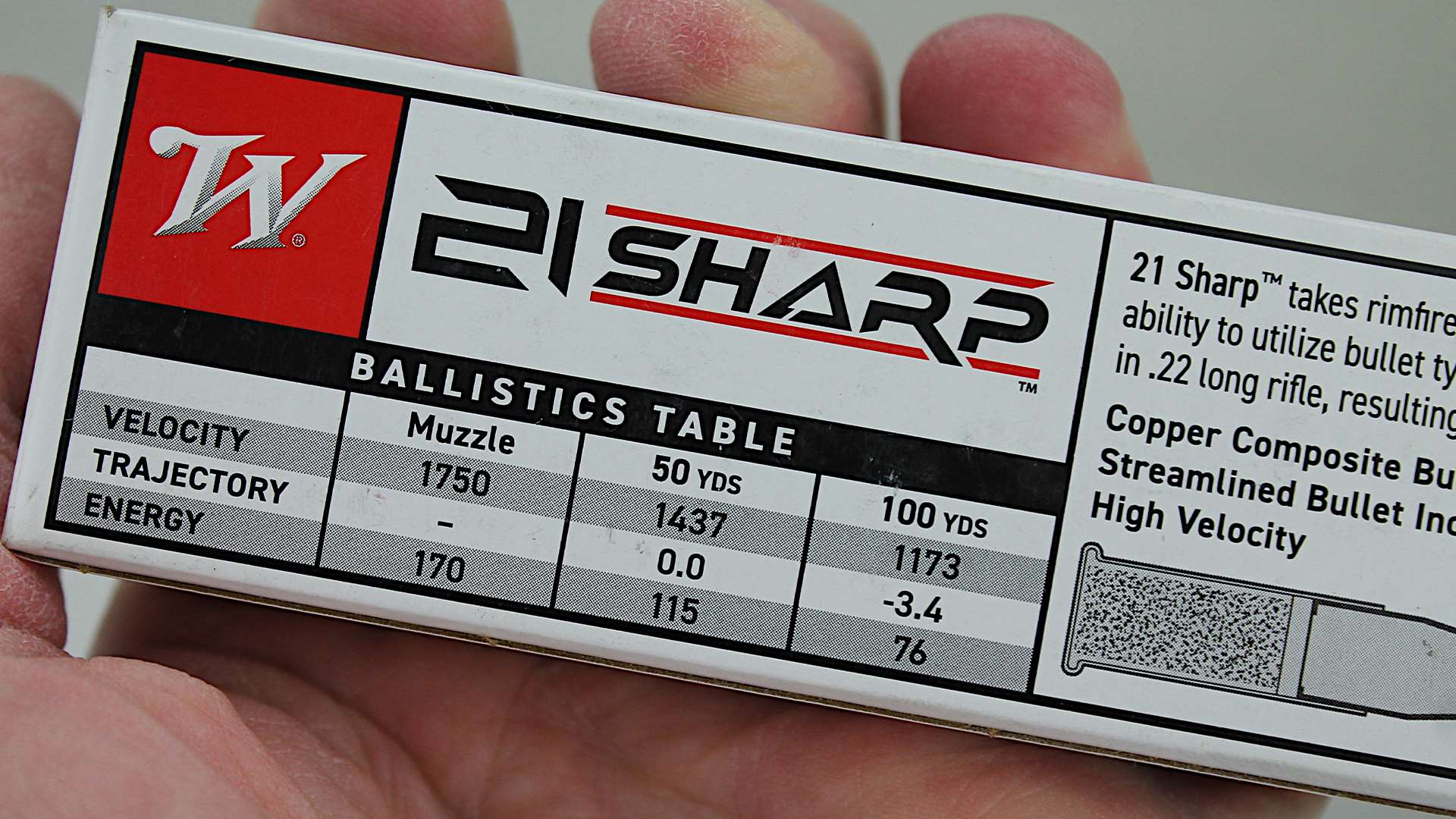
At this writing, Winchester is the only ammunition manufacturer offering .21 Sharp. As can be seen in Table 2, bullet velocity of all loadings is higher than that of standard velocity .22 Long Rifle ammunition, which is in the 1,050 f.p.s. to 1,200 f.p.s. ballpark. At 1,750 f.p.s., Winchester’s 25-grain Copper Matrix bullet load exceeds the 1,640 f.p.s. velocity of CCI’s .22 Long Rifle Stinger ammunition, which has long enjoyed the reputation as the fastest in its genre. Winchester elected to sell .21 Sharp ammunition in 100-round boxes, but still at retail prices comparable to that of .22 Long Rifle. Three of the .21 Sharp loadings average 16 cents per round, with the lead-free Copper Matrix loading priced at about 24 cents per round.
Table 2
LOW BC, BUT STABLE
With a little finesse, I was able to pull the .21 caliber bullet from the Copper Matrix loading using a .22 caliber collet in a press-mounted RCBS puller and a .22 Long Rifle shell holder. A scientific scale measuring to .01 (one one-hundredth) grain showed the bullet weighs 25.54 grains, the primed case 9.95 grains and the powder charge 2.92 grains. The .497-inch long bullet protrudes 0.1 inch into the case. The crimp on the case mouth was tight enough to leave an indentation in the solid copper bullet’s surface.
In plugging the bullet weight, length, BC and starting velocity into Berger Bullets’ online Twist Rate Stability Calculator, along with the rifling twist rate, the calculator concludes that, given 70° F at sea level, “Your bullet is flying with full stability. You can expect good groups and your BC is optimized.”
PRECISION ENHANCEMENTS
Arguably eye-of-the-beholder inelegant, Savage Arms’ Canadian-made Mark II FV-SR is nonetheless eminently functional for its role as a less-expensive rimfire rifle that still features a few enhancements for shooting with some precision. Most notable in that regard is the heavy contour barrel that is free-floated full length to the receiver. The muzzle is threaded for a brake or suppressor; a thread protector installed at the factory creates a hint of recess to protect the muzzle crown. The barrel is button-rifled with six grooves at a 1:12-inch twist rate—significantly faster than the .22 Long Rifle’s 1:16-inch twist, and the same as the .204 Ruger’s twist. About 7½ inches of the 16½-inch barrel is fluted, which is perhaps more aesthetic than functional, given its abbreviation.
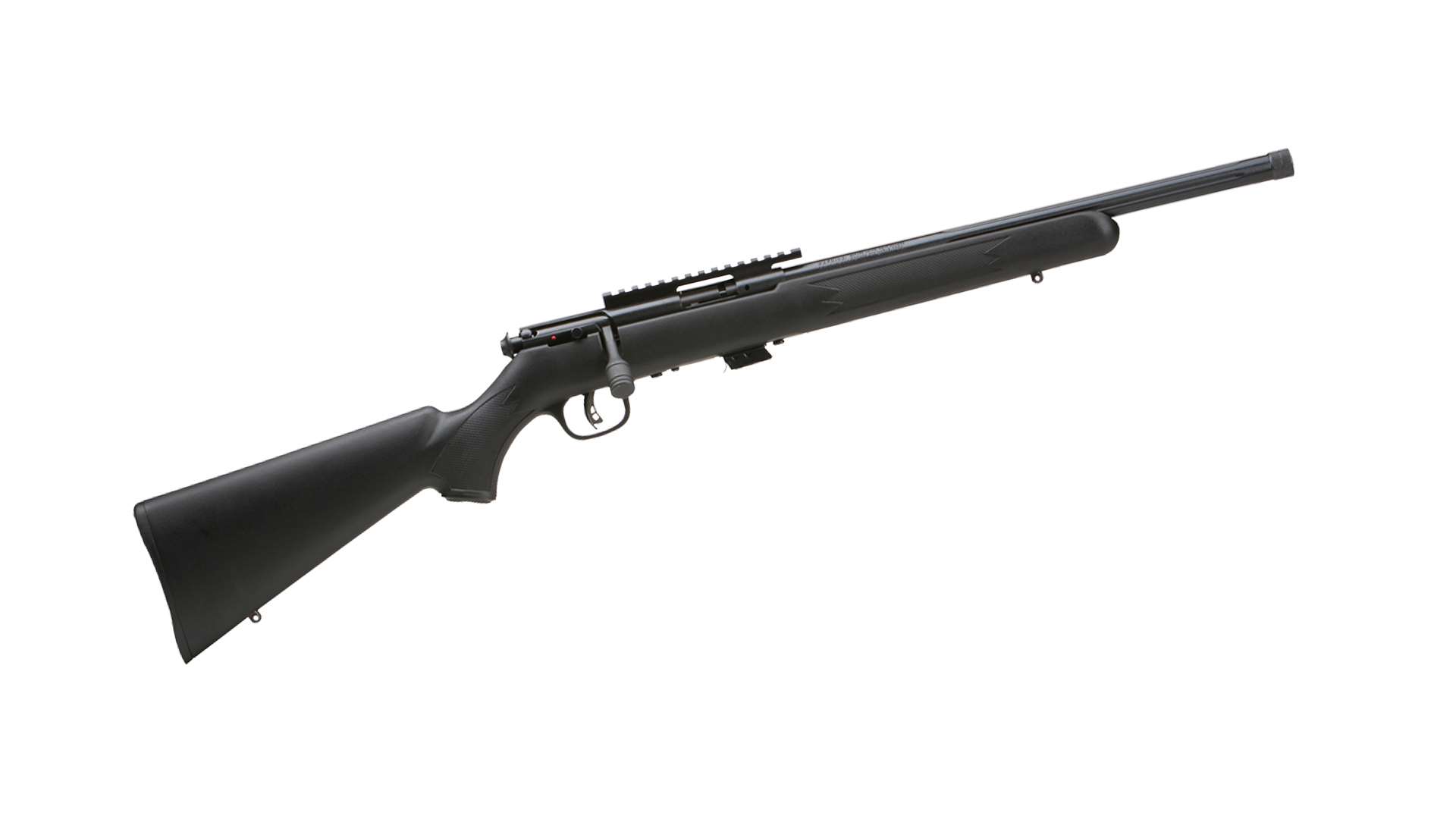
With no provision for iron sights, Savage installs a six-inch cantilevered Picatinny rail that should give plenty of allowance for proper eye relief when mounting a scope or other optic. The bottom of the rail is relieved to create greater clearance at the ejection port. Cartridges and spent cases eject to the right and rearward without hindrance from the Pic rail.
This is a cock-on-opening bolt action, and the bolt handle, with an oversize knob, serves as the lone locking lug. Engaging the side-mounted safety does not lock the bolt, allowing extraction of a live cartridge with the safety engaged.
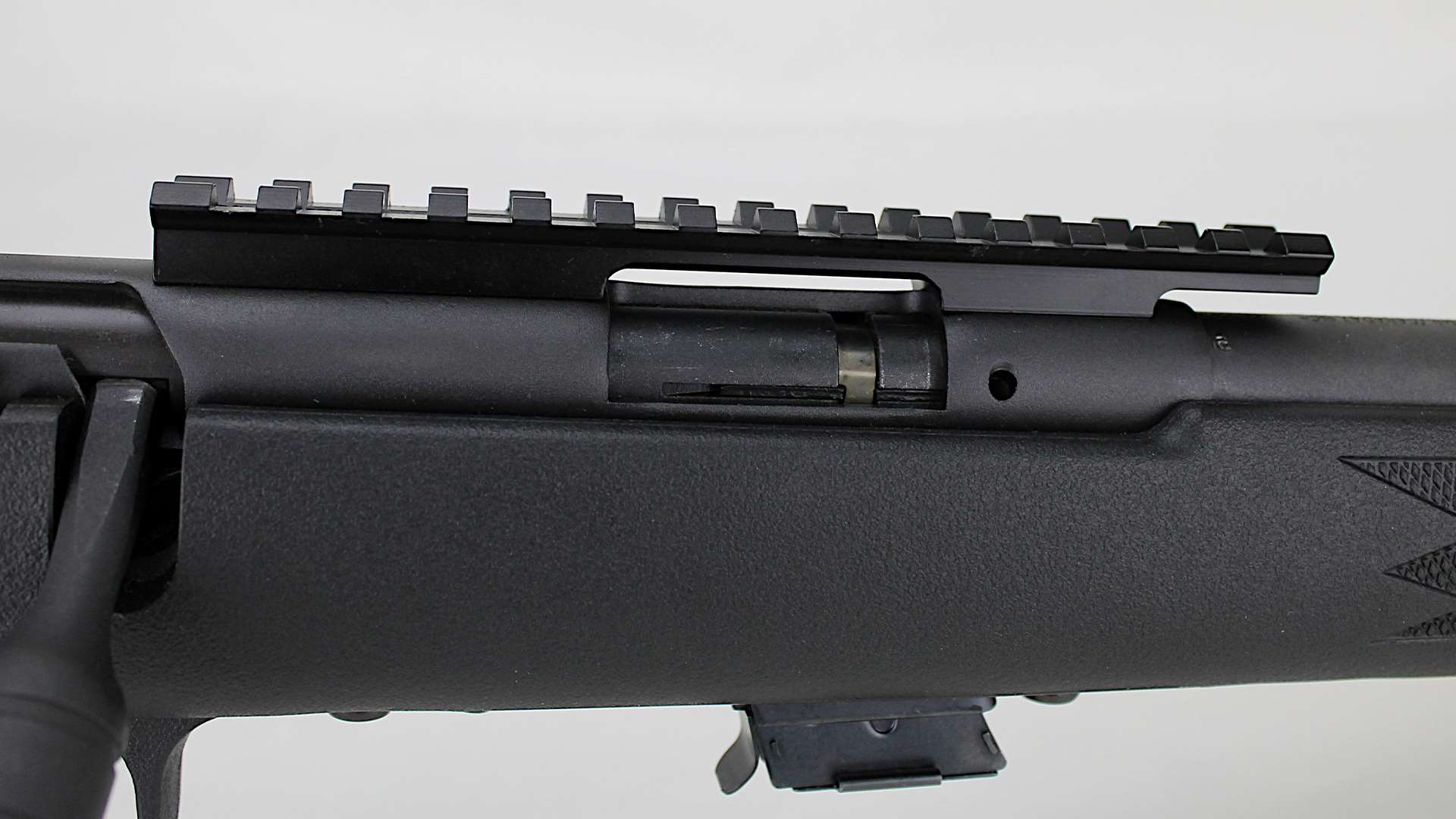
Savage Arms provides one five-round magazine with the rifle, as well as a tool for adjusting the Accutrigger from, ostensibly, 2½ to 4½ pounds. From the factory, the trigger on this rifle breaks cleanly right at two pounds, without take-up or creep—another aid to precision shooting.
A black synthetic stock with classic American lines helps keep the cost down, as Savage uses the same stock on other models of its Mark I and Mark II rifles. Four panel checkering and the trigger guard are molded into the stock, though the plastic butt plate mounts in the usual manner with two screws. All visible metal finish, except for the blued muzzle thread protector, is a black oxide (“Parkerizing”).
HUNTER, PLINKER—WITH POTENTIAL
Only the 25-grain Copper Matrix loading was available at this writing; Winchester intends to release the other three loadings later in 2025. Granted, a single rifle and a single cartridge loading do not exactly constitute an exhaustive analysis of accuracy or precision, but it may show potential.

For this evaluation, I mounted a Mueller 4.5-14X variable scope. Something to keep in mind is that there are, as of yet, no .21 caliber spuds for optical boresighters like my Sweany SITEA-LINE that employs caliber-specific spuds, so I determined a ballpark 25-yard zero with a Leupold Scopesmith magnetic boresighter. I also found that my cartridge-type laser boresighter for .22 Long Rifle chambers also fits the .21 Sharp chamber.
Intermittently, the Savage rifle suffered failures to feed the first rounds from the magazine, a problem traced to the magazine itself. Four fired cases failed to extract. Careful measurement of case rim diameter and thickness, case mouth diameter and case diameter in front of the rim showed these cases were no different from fired cases that extracted without issues. After about 40 rounds, the extraction problem ceased.
The 25- and 50-yard groups in Table 3 indicate plenty enough precision for hunting small game and even the smallest varmints, and the combination makes a satisfying plinker, as well.
Table 3

Interestingly, in conversations speculating about the .21 Sharp, one seems to automatically assume Winchester intends the cartridge to replace the .22 Long Rifle. Not a replacement for the .22 Long Rifle, the .21 Sharp is an improvement that should have happened 120 years ago, and it can stand on its own merits.
Due to the fact that the cost of ammunition is comparable to that of .22 Long Rifle, we now have a second eminently affordable plinking cartridge, and hunters can choose the Copper Matrix bullet where lead bullets are prohibited.
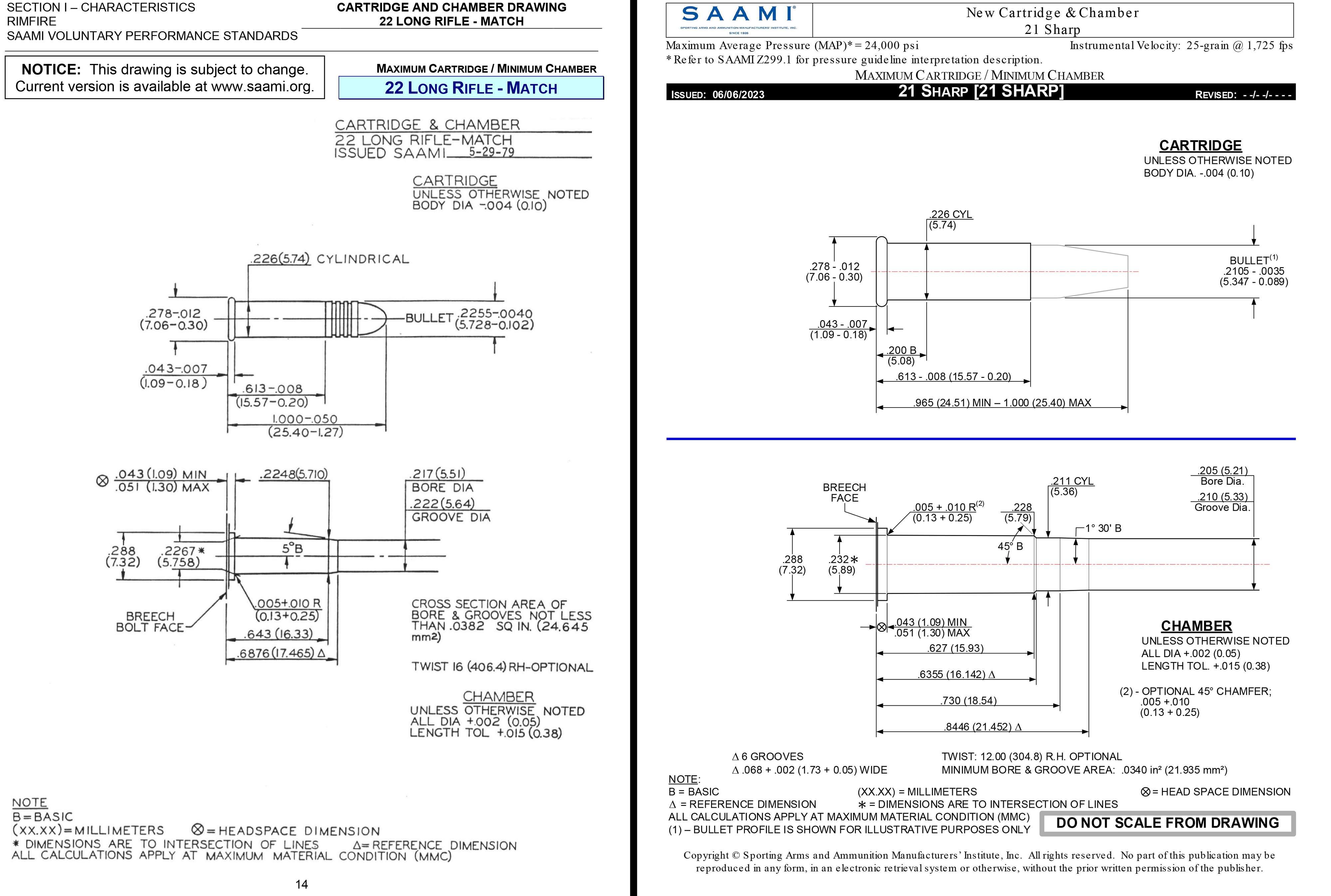
Beyond that, the .21 Sharp has potential for long-range rimfire competition as bullets of much higher BC could be developed for the purpose, bullets not possible with the .22 Long Rifle’s heel base configuration. Imagine a secant ogive, very low drag bullet seated in that rimfire case. If shooters show enough interest in the new cartridge and rifles chambered for it, imagination could become reality.
MSRP for the Savage Arms Mark II FV-SR bolt-action rifle chambered in .21 Sharp starts at $309. Learn more about .21 Sharp at winchester.com.








